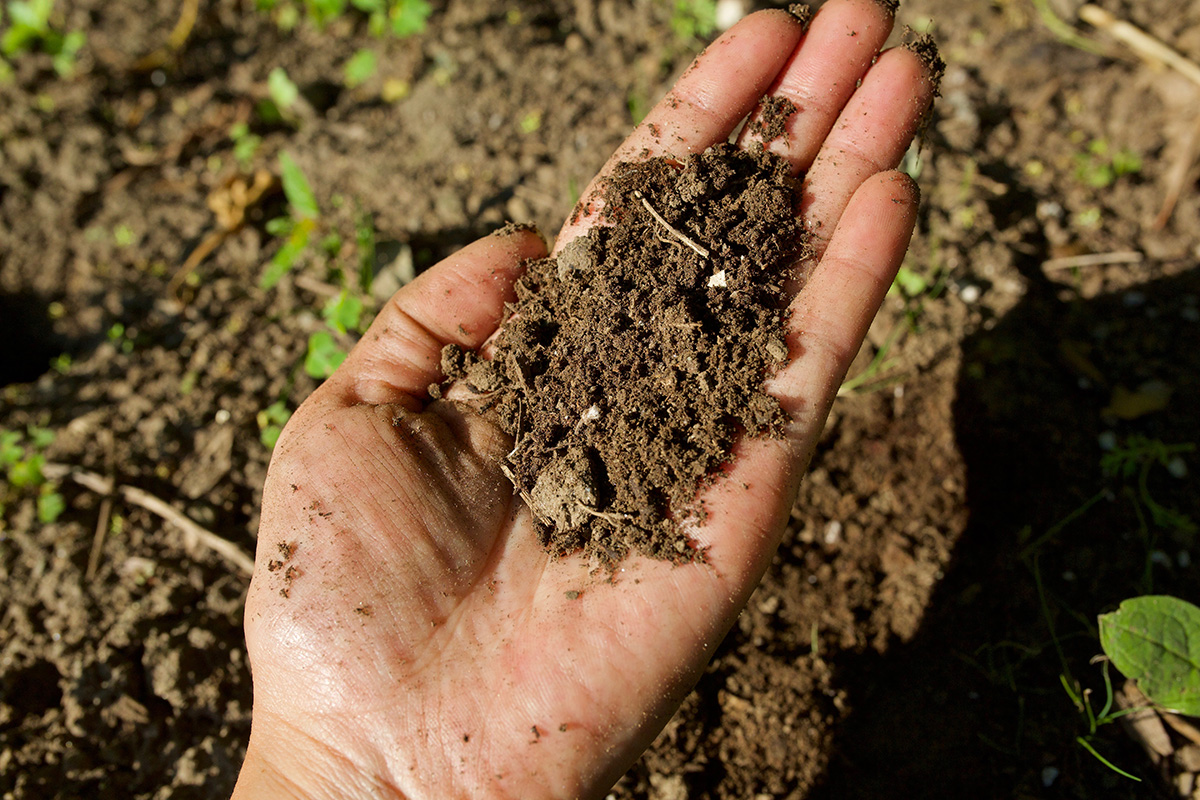
4 Tips to Control Mint in the Garden
There is nothing quite like the invigorating scent and flavor of mint (Mentha spp.) freshly picked from the garden. Mint can be added to many food dishes, it can add freshness to a summer lemonade, and it is helpful in supporting a variety of wellness conditions. From well-known peppermint (Mentha x piperita) and spearmint (Mentha spicata) to more obscure forms of mint like orange mint (Mentha x piperita citrata) and chocolate mint (Mentha x piperita f. citrata), there is a variety for everyone.
Despite mint’s many uses, if you’ve ever grown mint in your herb garden, you might recall that it can quickly overtake most of your plot. Mint spreads easily because of its resilient rhizomes. A rhizome is a large stem which grows underneath the ground and which propagates lateral shoots (Ivany, 1997). In other words, mint has a strong root system which spreads underground, facilitating its rapid growth. Mint grows easily come spring, and it can become a bit of a bully toward more vulnerable herbs. Mint is an incredibly versatile perennial herb and establishing it as a mainstay in your garden is integral as an herbalist. With that said, you might be wondering how to control mint in the garden if you decide to plant, or replant, it. Below we will share 4 tips to help you keep your mint plants under control.
4 Tips To Control Mint In The Garden

At a glance, here are some quick and easy steps you can take to manage mint overgrowth in your garden. We will discuss these in more detail below.
- Contain mint by planting it in pots.
- Create barriers for mint to limit its spread.
- Plant mint in less than ideal growing conditions to slow its growth.
- Prune mint regularly—at least once a month.

Tip # 1: Contain It
Due to mint’s strong root structure, it can quickly dominate a garden. Sure, you may enjoy the smell of fresh mint when you visit your herb garden, but you’ll quickly notice that mint will spread all over your garden and overtake your other herbs if you’re not careful. How then does a gardener remedy this problem? The answer is in containing it.
The best way to control mint in your garden is to plant it in containers. Begin by purchasing large containers (at least 18 inches deep) with drainage holes. Fill the container up with soil and plant your mint.
Next, you can place the containers on a hard surface like a concrete patio or deck, and allow your mint to flourish there. Another option is to plant the planters into the ground close to your herb garden making certain to leave at least one inch of the pot above the ground surface. Due to the resiliency of the mint rhizomes, there may be a chance of some growing out the bottom of the container so it is best to keep the containers on a hard surface.

Tip #2: Create Barriers
Mint also spreads above ground, through roots that grow from its stems. Although rhizomes are the most common culprit of spreading mint, it is necessary to account for above ground spreading as well. Potting mint in planters and allowing one inch of the pot to remain above ground helps to guide the mint to grow upward instead of outward, preventing its spread.

Tip #3: Plant In Dry Soil
Like most other plants, mint thrives in ideal conditions with rich, moist soil. However, because it is so resilient, it can survive on little more than rainwater and sunlight. To control mint in the garden, try creating a less than ideal environment by planting it in dry soil. Consider planting mint in and amongst flagstone or on walking paths which present a challenge for its growth. You’ll also have the added benefit of releasing mint oils from the garden path as you walk along the flagstone, crushing the mint leaves.

Tip # 4: Prune Regularly
Regular pruning is a strategy that can act as a barrier to mint overgrowth. Prune plants at least once a month and observe them to see if they are attempting to grow outward. Remove any stems that have strayed away into unwanted territory. When you are pruning plants, make sure to guide them upward instead of out towards your other plants. Sterilize pruning shears with alcohol both before and after pruning mint. Always remember to clean your tools when working with mint; the plant is prone to developing a fungal disease called powdery mildew which can spread to other plants in your garden (Kalra et al., 2005).
Control Mint and other Herbs in the Garden and Enjoy Their Benefits

Mint (Mentha spp.) is not the only herb that can be invasive in your garden. Plants like lance self-heal (Prunella vulgaris) is often used as ground cover or an alternative to traditional grass in some yards due to its invasive nature. Other herbs like catnip and oregano can be similarly invasive in an herb garden and should be treated in the same way as mint.
Mint is an incredible herb to have at the ready when you need it—in the kitchen and in the herb toolkit, and nothing is better than enjoying a fresh cup of iced mint tea straight from your herb garden this summer.
Control mint in the garden by containing, pruning, limiting its growth, and pruning it regularly so you can reap the benefits of mint all summer long and for years to come.

REFERENCES
Ivany, J.A. (1997). Effect of rhizome depth in soil on emergence and growth of field mint (Mentha arvensis). Weed Technology, 11(1), 149-151.
Kalra, A., Singh, H.B., Pandey, R., Samad, A., Patra, N.K., & Kumar, S. (2005). Diseases in mint: causal organisms, distribution, and control measures. Journal of Herbs, Spices & Medicinal Plants, 11(1-2), 71-91.








